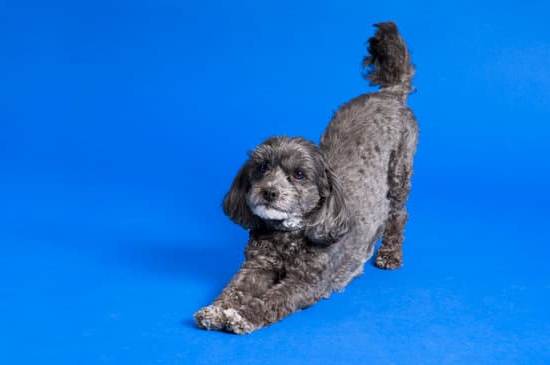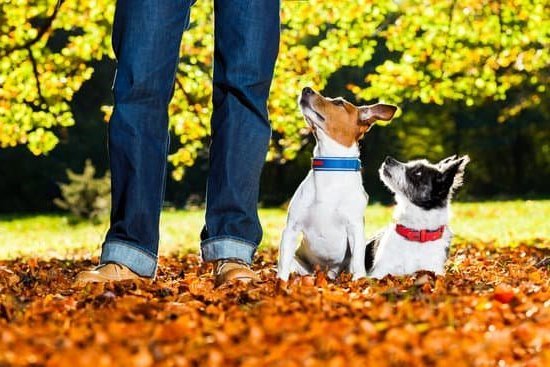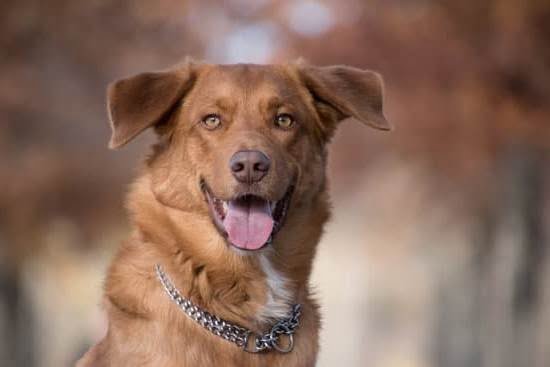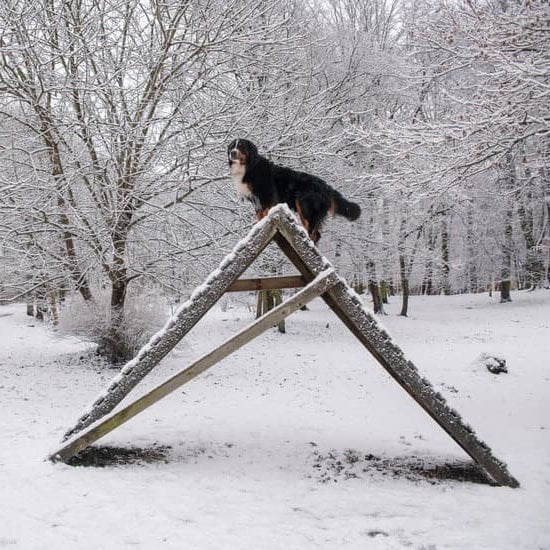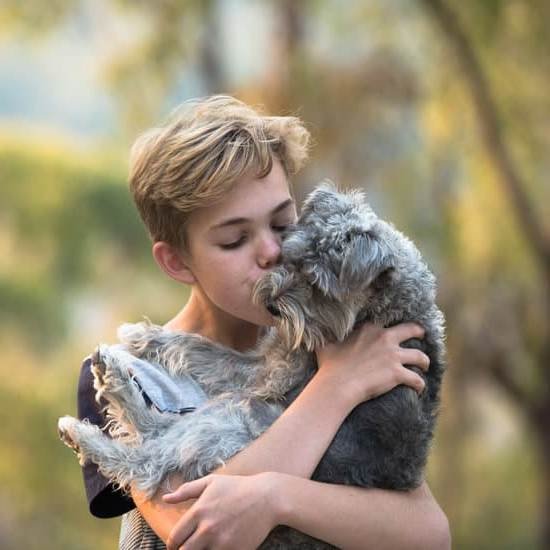Are you tired of coming home to find your dog has peed in the house again? Training your dog not to pee indoors is an essential part of responsible pet ownership.
Not only does it contribute to a cleaner and healthier environment, but it also ensures a well-behaved and happy pup.
In this article, we will discuss the significance of house training for dogs, setting realistic expectations, establishing a routine for regular potty breaks, positive reinforcement for desirable behavior, addressing accidents with calm and consistent correction, managing the dog’s diet and water intake, utilizing crate training as a house training tool, and seeking professional help for persistent house training issues.
House training your dog is crucial for maintaining cleanliness and hygiene within your home while ensuring the well-being of both your pet and your family. It’s important to realize that patience and consistency are key to successful house training. Accidents are bound to happen during the training process, so it’s vital to manage your expectations accordingly.
Consistency is also necessary when creating a routine for regular potty breaks. Establishing a schedule based on your dog’s age, size, and breed will help prevent indoor accidents. Additionally, positive reinforcement plays a significant role in house training as it rewards desirable behavior such as peeing outside.
On the other hand, addressing accidents with calm and consistent correction without scolding or punishing is equally important in this process. Lastly, be sure to seek professional help if you’re facing persistent house training issues despite your best efforts.
Setting Realistic Expectations for House Training
House training a dog is a process that requires patience, consistency, and realistic expectations. It’s important for dog owners to understand that accidents are normal during the training process, and it may take some time before a dog is fully potty-trained. Setting realistic expectations for house training helps manage frustration and ensures a successful training experience for both the dog and the owner.
Patience and Consistency
One of the key factors in successful house training is patience. Dog owners must understand that accidents will happen, especially during the early stages of training. It’s important to remain patient and consistent with the training methods in order to reinforce positive behavior. Dogs thrive on routine and consistency, so it’s essential for owners to maintain a structured training schedule.
Understanding Accidents
Accidents are a natural part of the house training process, and dog owners should not feel discouraged or frustrated when they occur. Instead, it’s important to take accidents in stride and use them as learning opportunities for both the dog and the owner. Understanding that accidents are normal helps manage expectations and prevents feelings of discouragement during the training process.
By setting realistic expectations for house training, dog owners can approach the process with patience and understanding. Consistency, positive reinforcement, and a calm attitude towards accidents are all crucial components of successful house training. With proper expectations in place, dog owners can create a positive learning environment for their pets as they work towards achieving a potty-trained household.
Establishing a Routine for Regular Potty Breaks
Factors to Consider
When establishing a routine, factors such as the dog’s age, size, and breed should be taken into consideration. Puppies, for example, have smaller bladders and may need to go outside more frequently compared to adult dogs. Similarly, smaller breeds may need more frequent potty breaks than larger breeds.
Importance of Outdoor Trips
It is essential to take your dog outside frequently to relieve itself. Dogs usually need to go after waking up, after eating or drinking, after play or exercise, and before bedtime. By taking your dog outside at these key times throughout the day, it can reduce the likelihood of accidents indoors.
Consistency Is Key
Consistency is key when establishing a routine for potty breaks. Dogs thrive on routines and will quickly learn when and where they are supposed to go if they are taken out at the same times each day. By maintaining a consistent schedule, you are reinforcing positive habits and setting your dog up for success in their house training journey.
By understanding how to train your dog not to pee in the house through establishing a consistent routine for regular potty breaks, you are laying the groundwork for successful house training. Remember that patience and consistency are essential during this process, and accidents are normal as your dog learns this new behavior.
Positive Reinforcement for Desirable Behavior
When it comes to house training your dog, positive reinforcement is a powerful tool for encouraging desirable behavior. Positive reinforcement involves rewarding your dog for exhibiting the behaviors you want to see, in this case, peeing outside.
This method focuses on praising and rewarding the dog when it eliminates in the appropriate place, reinforcing the desired behavior and making it more likely to occur in the future. Here are some examples of how to effectively use positive reinforcement in house training:
- Use treats: When your dog pees outside, immediately praise and reward them with a small, tasty treat. This creates a positive association with eliminating outdoors.
- Verbal praise: In addition to treats, use enthusiastic verbal praise such as “good boy” or “good girl” to further reinforce the behavior.
- Physical affection: Many dogs respond well to physical touch, so petting and giving your dog attention after they pee outside can be an effective form of positive reinforcement.
Consistency is key when using positive reinforcement. It’s important to reward your dog every time they eliminate outside until they have fully grasped the concept of where they should go potty.
It’s also important not to inadvertently reinforce indoor peeing by giving attention or scolding your dog when accidents occur. Instead, simply clean up the mess and continue with the training process. Over time, consistent positive reinforcement will help train your dog not to pee in the house.
Addressing Accidents With Calm and Consistent Correction
When house training a dog, accidents are an inevitable part of the process. It’s important for pet owners to understand that accidents will happen, especially during the initial stages of training. How to train your dog not to pee in the house involves addressing accidents with calm and consistent correction.
Here are some tips for handling accidents effectively:
- Stay calm: When you catch your dog peeing in the house, it’s important to remain calm. Yelling or scolding your dog can be counterproductive and may cause anxiety, fear, or confusion. Instead, simply interrupt the behavior by saying “no” in a firm but gentle voice.
- Redirect the behavior: After interrupting the accident, immediately take your dog outside to finish peeing. This helps reinforce the idea that the appropriate place to relieve itself is outdoors. Once outside, give plenty of verbal praise and maybe even a treat if your dog finishes peeing in the right spot.
- Consistent cleanup: Accidents should be cleaned up promptly and thoroughly to remove any lingering odors that might encourage your dog to pee in the same spot again. Use enzymatic cleaners specifically designed for pet messes.
It’s important for pet owners to remember that house training takes time and patience. With consistent correction and positive reinforcement, most dogs can learn where it’s appropriate to relieve themselves within a few weeks. By staying patient and managing accidents calmly, pet owners can effectively teach their dogs not to pee in the house.
Managing the Dog’s Diet and Water Intake
One of the key factors in successfully house training your dog is managing its diet and water intake. Properly managing these aspects can significantly help in preventing indoor accidents. As an owner, it’s important to understand the connection between your dog’s diet, water intake, and its bathroom habits.
First and foremost, it’s essential to establish a consistent feeding schedule for your dog. This means feeding your dog at the same times each day to regulate its digestion and bathroom habits. By keeping to a schedule, you can more accurately predict when your dog will need to go outside to relieve itself. Additionally, avoid leaving food out all day for your dog to graze on, as this can lead to unpredictable bathroom habits.
In terms of water intake, it’s important to provide your dog with access to clean and fresh water throughout the day. However, monitoring and regulating water intake can also be helpful in preventing indoor accidents. Limiting the amount of water your dog consumes in the evening can reduce the likelihood of overnight accidents.
| Aspect | Best Practice |
|---|---|
| Feeding Schedule | Establish a consistent feeding schedule for your dog. |
| Water Intake | Provide access to fresh water throughout the day but limit intake in the evening. |
By managing your dog’s diet and water intake effectively, you can work towards having a successfully potty-trained pet that understands when and where it should relieve itself.
Utilizing Crate Training as a House Training Tool
Crate training is a valuable tool for house training your dog and helping to prevent indoor accidents. By using a crate, you can provide your dog with a safe and comfortable space when you are unable to supervise them closely. This method also capitalizes on the dog’s natural instinct not to soil its sleeping area, making it an effective way to discourage indoor peeing.
When introducing crate training, it is essential to choose the right size crate for your dog. The crate should be large enough for the dog to stand up, turn around, and lie down comfortably. It should also have a soft bedding or blanket inside for added comfort. To make the crate a positive space for your dog, consider placing some of their favorite toys or treats inside.
To effectively use a crate for house training, it’s important to gradually acclimate your dog to spending time in the crate. Start by leaving the door open and allowing the dog to explore and get comfortable with it. Gradually increase the amount of time they spend inside, making sure to provide them with praise and rewards for calm behavior while in the crate.
| Benefits of Crate Training | How Long Dogs Can Hold Their Bladder |
|---|---|
| Prevents indoor accidents | Generally based on their age (e.g. puppies can hold their bladder for about one hour per month of age) |
| Provides a safe space for the dog | Larger breeds have larger bladders and can hold urine longer than smaller breeds |
The key to successful crate training is never using the crate as punishment. It should always be associated with positive experiences, such as receiving treats or meals inside the crate. With patience and consistency, many dogs come to see their crates as their own personal den, creating a sense of security that helps with house training efforts.
Seeking Professional Help for Persistent House Training Issues
In conclusion, house training a dog is a vital aspect of responsible pet ownership. It not only ensures the cleanliness and health of the household but also contributes to the overall well-being and behavior of the dog. Setting realistic expectations while being patient and consistent throughout the training process is crucial. Understanding that accidents are normal and addressing them with calm and consistent correction is key to successful house training.
Establishing a routine for regular potty breaks is essential, as it helps the dog understand when and where it should relieve itself. Using positive reinforcement for desirable behavior, such as peeing outside, is an effective method to train your dog not to pee in the house. Additionally, managing the dog’s diet and water intake can also play a significant role in preventing indoor accidents.
For persistent house training issues, seeking professional help from a certified dog trainer or a veterinarian may be necessary. They can provide expert guidance and support in identifying underlying reasons for indoor peeing problems and offer specialized solutions to address them. By following these tips and strategies, you can effectively train your dog not to pee in the house, leading to a clean, healthy, and harmonious environment for both you and your furry companion.
Frequently Asked Questions
How Do I Stop My Dog From Peeing in the House Alone?
To stop your dog from peeing in the house when alone, you can start by making sure they have regular potty breaks and plenty of opportunities to go outside. Also, consider crate training or confining them to a small, easy-to-clean area when you’re not home.
What Deters Dogs From Peeing in the House?
Dogs can be deterred from peeing in the house by ensuring they have consistent access to outdoor potty areas. Using positive reinforcement when they go outside and cleaning up accidents with an enzymatic cleaner can also discourage indoor peeing.
Can You Discipline a Dog for Peeing in the House?
It’s not effective or humane to discipline a dog for peeing in the house. Punishment after the fact will only confuse them and create fear or anxiety. Instead, focus on prevention through proper training, routine, and positive reinforcement for good behavior.

Welcome to the blog! I am a professional dog trainer and have been working with dogs for many years. In this blog, I will be discussing various topics related to dog training, including tips, tricks, and advice. I hope you find this information helpful and informative. Thanks for reading!

